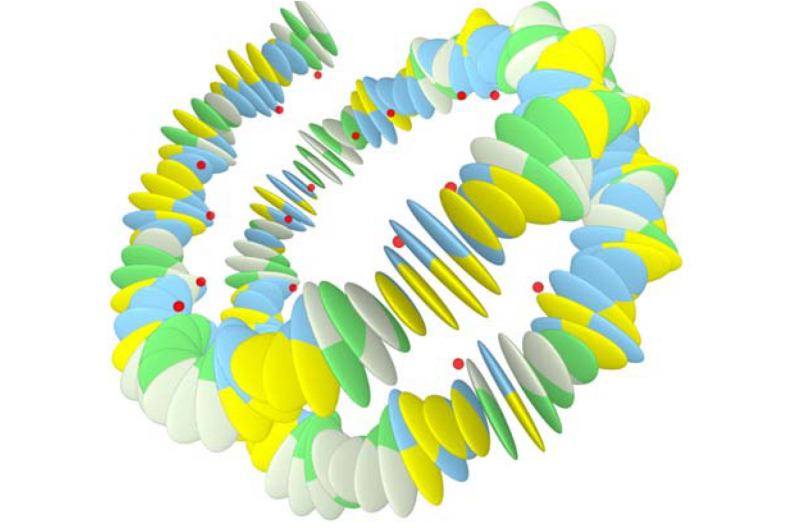Second layer of information in DNA confirmed

Leiden theoretical physicists have proven that DNA mechanics, in addition to genetic information in DNA, determines who we are. Helmut Schiessel and his group simulated many DNA sequences and found a correlation between mechanical cues and the way DNA is folded. They have published their results in PLoS One.
When James Watson and Francis Crick identified the structure of DNA molecules in 1953, they revealed that DNA information determines who we are. The sequence of the letters G, A, T and C in the famous double helix determines what proteins are made ny our cells. If you have brown eyes, for example, this is because a series of letters in your DNA encodes for proteins that build brown eyes. Each cell contains the exact same letter sequence, and yet every organ behaves differently. How is this possible?
Mechanical cues
Since the mid 1980s, it has been hypothesized that there is a second layer of information on top of the genetic code consisting of DNA mechanical properties. Each of our cells contains two meters of DNA molecules, and these molecules need to be wrapped up tightly to fit inside a single cell. The way in which DNA is folded determines how the letters are read out, and therefore which proteins are actually made. In each organ, only relevant parts of the genetic information are read. The theory suggests that mechanical cues within the DNA structures determine how preferentially DNA folds.
Simulation
For the first time, Leiden physicist Helmut Schiessel and his research group provide strong evidence that this second layer of information indeed exists. With their computer code, they have simulated the folding of DNA strands with randomly assigned mechanical cues. It turns out that these cues indeed determine how the DNA molecule is folded into so-called nucleosomes. Schiessel found correlations between the mechanics and the actual folding structure in the genome of two organisms—baker's yeast and fission yeast. This finding reveals evolutionary changes in DNA—mutations—that have two very different effects: The letter sequence encoding for a specific protein can change, or the mechanics of the DNA structure can change, resulting in different packaging and levels of DNA accessibility, and therefore differing frequency of production of that protein.
More information: Behrouz Eslami-Mossallam et al. Multiplexing Genetic and Nucleosome Positioning Codes: A Computational Approach, PLOS ONE (2016). DOI: 10.1371/journal.pone.0156905
Journal information: PLoS ONE
Provided by Leiden Institute of Physics


















